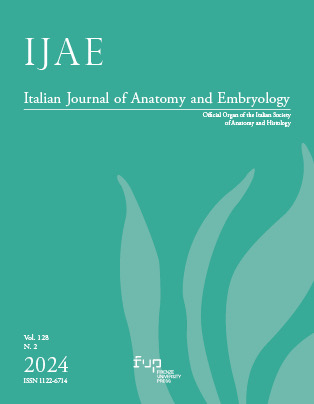Published 2024-12-31
Keywords
- Cerebellum,
- Hypothalamus,
- Hypothalamocerebellar circuit,
- Autonomic nervous system
How to Cite
Copyright (c) 2024 Vincenzo Benagiano, Anna Rizzi

This work is licensed under a Creative Commons Attribution 4.0 International License.
Abstract
Traditionally, the cerebellum is viewed as a center for integrating vestibular and general proprioceptive sensory, enabling the processing of somatic motor responses essential for maintaining balance and posture. Moreover, the cerebellum regulates higher motor functions of the neocortex, which involve motor planning and coordination of movements, as well as nonmotor functions related to cognition and affectivity. In recent years, several studies have suggested that the cerebellum may play a role in regulating visceral functions. Although the specific neural pathways through which these visceral functions are mediated remain unclear, anatomical evidence to support these functions has been supplied by the detection of a feedback circuit that connects bidirectionally the cerebellum and the hypothalamus, the primary integrative center of the autonomic nervous system. This hypothalamocerebellar circuit strongly supports the idea of the cerebellum as a center of the autonomic nervous system.

